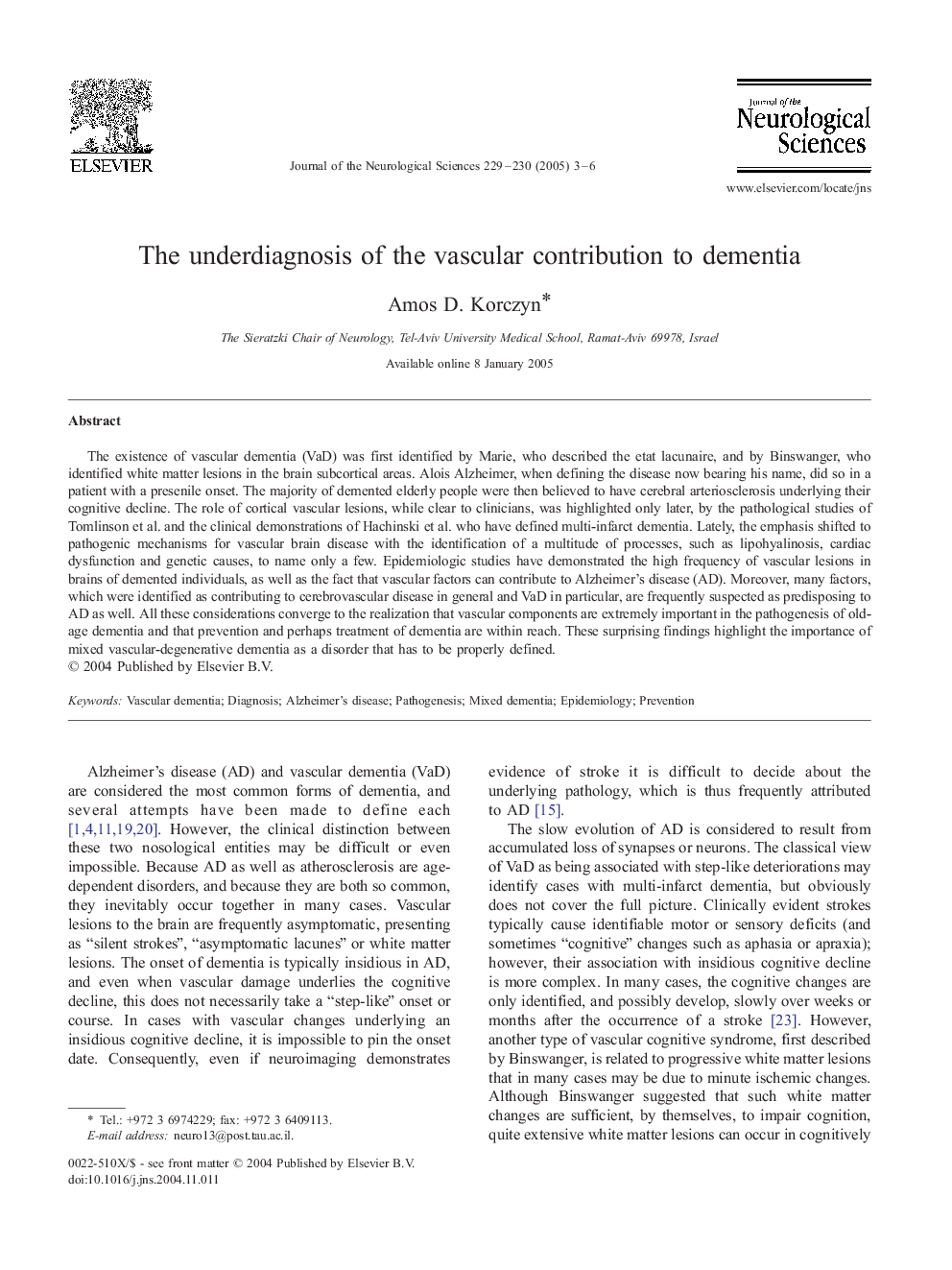| Article ID | Journal | Published Year | Pages | File Type |
|---|---|---|---|---|
| 9880386 | Journal of the Neurological Sciences | 2005 | 4 Pages |
Abstract
The existence of vascular dementia (VaD) was first identified by Marie, who described the etat lacunaire, and by Binswanger, who identified white matter lesions in the brain subcortical areas. Alois Alzheimer, when defining the disease now bearing his name, did so in a patient with a presenile onset. The majority of demented elderly people were then believed to have cerebral arteriosclerosis underlying their cognitive decline. The role of cortical vascular lesions, while clear to clinicians, was highlighted only later, by the pathological studies of Tomlinson et al. and the clinical demonstrations of Hachinski et al. who have defined multi-infarct dementia. Lately, the emphasis shifted to pathogenic mechanisms for vascular brain disease with the identification of a multitude of processes, such as lipohyalinosis, cardiac dysfunction and genetic causes, to name only a few. Epidemiologic studies have demonstrated the high frequency of vascular lesions in brains of demented individuals, as well as the fact that vascular factors can contribute to Alzheimer's disease (AD). Moreover, many factors, which were identified as contributing to cerebrovascular disease in general and VaD in particular, are frequently suspected as predisposing to AD as well. All these considerations converge to the realization that vascular components are extremely important in the pathogenesis of old-age dementia and that prevention and perhaps treatment of dementia are within reach. These surprising findings highlight the importance of mixed vascular-degenerative dementia as a disorder that has to be properly defined.
Keywords
Related Topics
Life Sciences
Biochemistry, Genetics and Molecular Biology
Ageing
Authors
Amos D. Korczyn,
